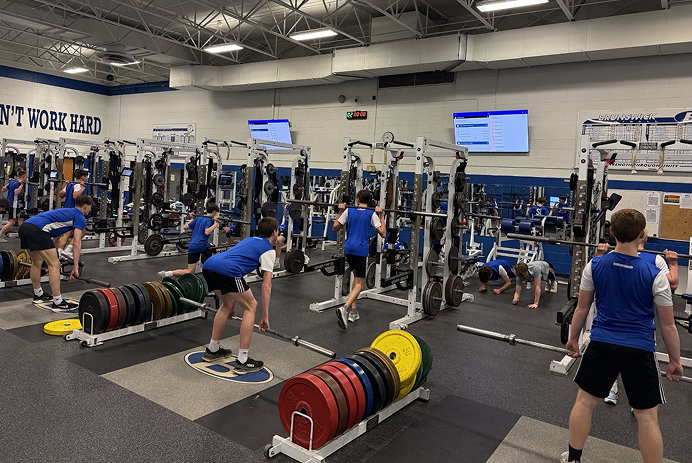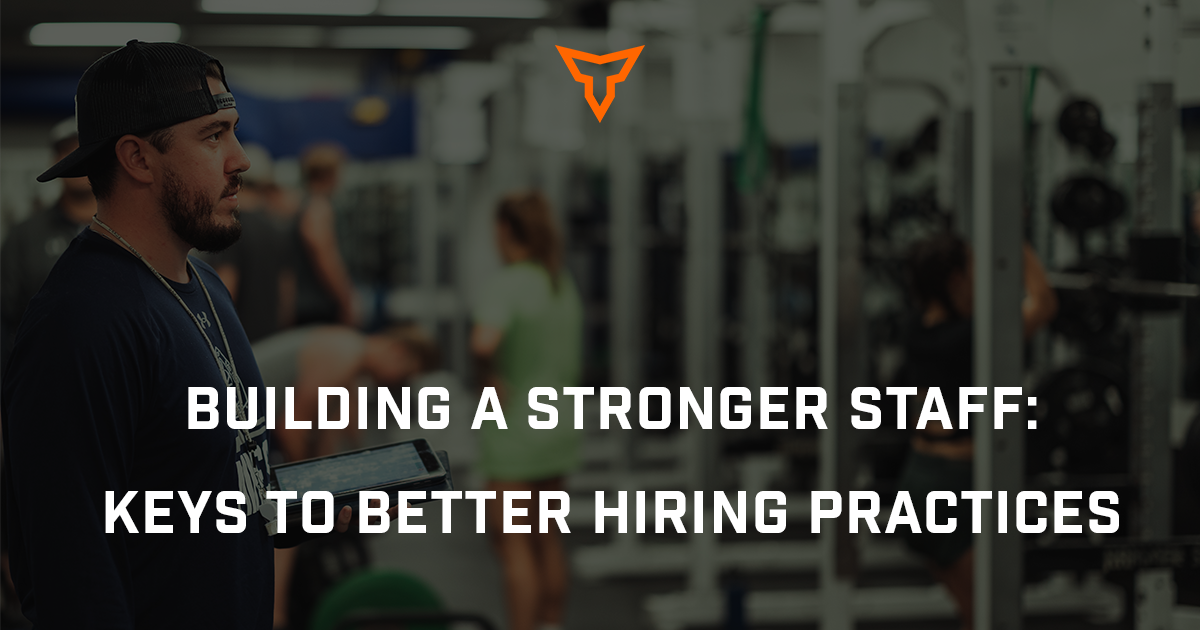Developing a School-Wide P.E. and Strength & Conditioning Program
As high schools continue to recognize the importance of strength and conditioning as a key component of a successful athletics program, there are more and more opportunities to manage both a physical education program as well as a strength and conditioning program.
Many high school coaches find themselves in the position of creating both a P.E. (P.E.) program for the school along with the strength and conditioning program. The needed P.E. program may be geared toward high school only or it may extend to cover Kindergarten through 12th grade. If given the opportunity to design both programs, it's also important that the two mesh well. This may be tricky to achieve especially if you're working with limited staffing. As with the creation of any new program, it will be time consuming and that isn't a negative thing. Doing anything well requires hours of time dedicated to intentional, thoughtful, and thorough planning.
For a bit of background, last fall I began a new job at a school that was looking to do a complete overhaul of fitness throughout the school. They were ready to revamp the strength and conditioning available to athletes and to create a P.E. curriculum that flows seamlessly from elementary to high school.
The Benefits of Designing P.E. and Strength and Conditioning Programs
How many times as strength coaches have we all wished that the athletes would have learned a certain movement pattern earlier so we can progress?
I began my coaching career at the college-level of strength and conditioning and every year I found myself “wishing” as the freshmen athletes reported. I started making mental lists of what I wished athletes would learn in high school so that they could report to college athletics with strong foundational weightlifting and movement patterns.
When I did make the jump from being part of a college strength staff to being on my own as a high school strength and conditioning coach, I had the opportunity to teach the athletes everything that I had wished they would learn in high school. I had my plan in place, but soon after the freshmen athletes reported to summer strength training the wishing started to creep back into my thoughts. I noticed that many of the athletes had a lack of flexibility and this hindered them from getting into proper positioning, such as hip hinge and deep squat. I wished that the kids had learned correct movement patterns at an earlier age before lack of flexibility became an issue. If positioning is taught beginning at the elementary age, by the time the students are in high school the correct movement patterns could become automatic.
Being able to influence or create a P.E. curriculum gives coaches an opportunity to stop wishing.
The program can be designed to introduce positioning at the elementary age and progress piece by piece throughout middle school and high school. I’ve had the opportunity this school year to create that type of program.
Developing a School-Wide Curriculum
When developing a school-wide curriculum, it's helpful to keep in mind two angles…where is your program now and where do you want your program to be.
Here's what I did my first few weeks on the job:
- Take inventory of the P.E. and strength and conditioning equipment that the school already owned.
- Made a list of what other pieces of equipment were needed.
- Started working on the overall vision and the specific curriculum for the P.E. program.
- Contacted equipment companies and put together a quote for the equipment needed to support the vision I had for the P.E. program.
- Compiled all the information and presented to the administration the vision, equipment desired, curriculum, and budget needed to support the installation of the program. I presented specific information with details supporting where we are now and where we want to be.
By having this information, the administration was able to see the real cost and intentional plan to get us to our goal.
When creating the P.E. curriculum, I kept in mind how our school does a fantastic job preparing the students academically for college. I wanted to make sure that we offer a P.E. curriculum that strives to equip our students with the tools necessary to continue a healthy lifestyle throughout college and adulthood.
The program created is divided into 3 phases: an elementary phase, a middle school phase, and a high school phase.
The Three Phases
At the elementary level, students will begin their Fitness journey by Building the Foundation. The students begin learning the fundamental skills and concepts needed to be successful in a variety of activities. Kindergarten - 4th graders will focus on body awareness through movement that utilizes hopping, skipping, and jumping with rhythm and balance. The students will progress to gymnastics-based exercises such as rolling and tumbling type movements. These movements will be practiced in a warm-up at the start of class. Then the students will learn how to participate in structured games. This will help the students learn how to acknowledge and follow rules in game-like situations and team playing with others.
The journey continues in middle school where students will begin Sampling the Menu. The students will learn specialized skills and concepts in a variety of activities. The middle school phase is designed to adjust with the students as they mature from early middle school to later
The final phase takes place during the high school years, where students will continue their fitness journey by Choosing a Path. High School P.E. will be split into two tracks, Performance and Physical, in order to give the students a tailored experience. Performance track will be a fitness program that is geared towards the sports activity. Physical track will be a fitness program that is geared towards overall general physical fitness.
The Performance track will be for student athletes and will focus on the overall athletic development of the student athlete. This will be accomplished by teaching proper movement patterns through running, jumping, and movement drills along with multi joint weightlifting movements such as cleans, squats and pressing movements. The Performance track will be split into 2 sections, In-Season and Off-Season. The In-Season athletes will perform their weightlifting along with flexibility and mobility programs to help with in-season athletic performance. The Off-Season athletes will perform agility training during the
P.E. period and perform their weightlifting and conditioning after school.
The Physical track will focus on general physical fitness for the non-athlete. Throughout the year the student will be introduced to dynamic mobility and flexibility movements, proper running mechanics, bodyweight and weighted exercises, conditioning drills and intramural type games.
The end goal stays the same regardless if you are in the Performance track or the Physical track, it is to prepare our students physically for college. We want our students to enter college able to confidently put together a workout program and know how to use the equipment in the student rec center. If our students are blessed enough to participate in collegiate athletics, we expect them to report to the college strength coach in great shape knowing how to perform the drills, exercises and weightlifting movements with excellent technique
Subscribe to our blog
Subscribe to receive the latest blog posts to your inbox every week.
Related posts

Sport Psychology Starter Pack: What to Focus on with Your Athletes

Scaling Your Side Hustle Part III

